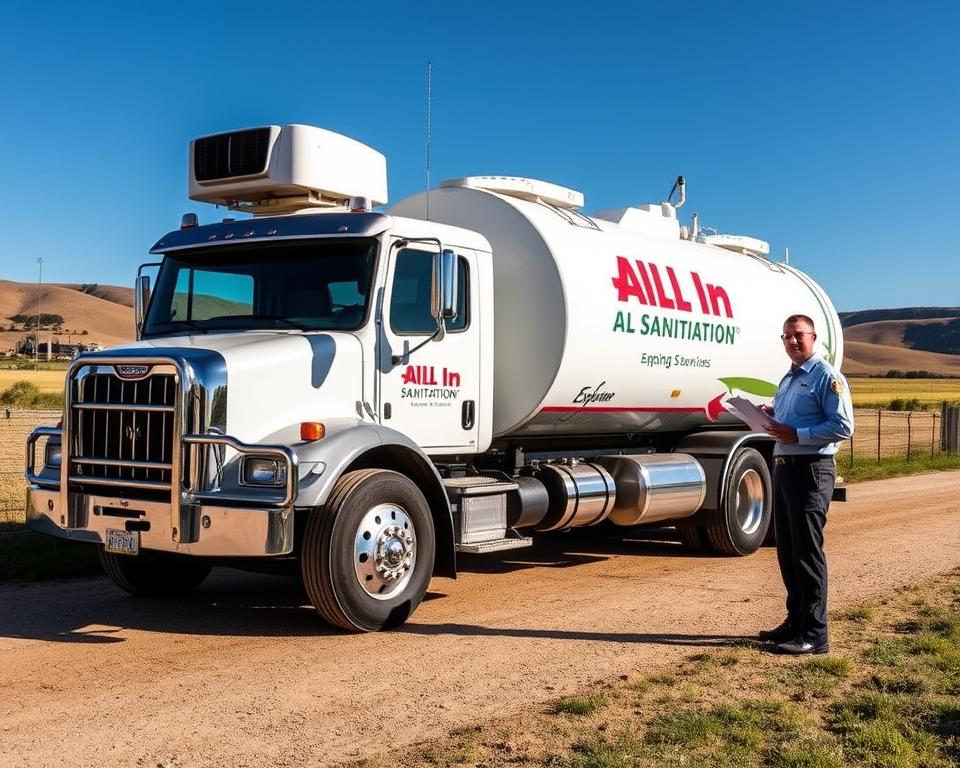Understanding and Maintaining Your RV Black Water Tank Pump
The functionality of your RV black water tank pump is crucial for your travels, have you ever wondered about it? This pump is a vital component of your RV’s plumbing for waste. For trouble-free journeys, appropriate upkeep is essential. This guide provides essential details for handling your RV waste water pump. Knowing how vital it is will help you improve its efficiency and further enjoy your RV travels.
Core Messages
- For proper waste handling, the RV black water tank pump is essential.
- Keeping up with regular maintenance will help your RV waste water pump last longer.
- Understanding system components enhances troubleshooting skills.
- It’s crucial to follow safe dumping procedures for hygiene and environmental reasons.
- Winterizing your RV black water tank system can prevent costly repairs.
- Maintaining the cleanliness of your RV sanitation pump will help avoid clogs and unpleasant smells.
The Importance of Understanding RV Water Tanks
Many RV owners may not fully grasp the importance of different water tanks for smooth camping using RV waste pumping service. The functions of the RV fresh water, gray water, and black water tanks are important to be aware of. Each plays a unique role and needs proper care.
The purpose of the RV fresh water tank is to store water that is safe to drink. It’s used for drinking, cooking, and hygiene. Ensuring this tank’s cleanliness and water safety is paramount. Fresh water is crucial for hydration and health during travels.
On the other hand, the RV gray water tank collects wastewater from sinks and showers. Due to its capacity to fill quickly, this tank requires regular checks and emptying. Correct management of the gray water tank is vital for a clean RV interior.
Holding waste from the toilet, the RV black water tank is very important. It demands constant vigilance to avoid smells and buildup. Employing appropriate tank chemicals enhances condition and experience. Knowing how to care for each tank makes RV trips more enjoyable.
RV Black Water Tank Pump: An Explanation
A key component of recreational vehicle sanitation is the RV black water tank pump. Its job is to transfer waste to specific locations for disposal. For maintenance purposes and to prevent costly fixes, it’s important to understand its function.
There are different types of pumps available for RV owners, such as the sewer pump. The macerator pump is often chosen because it grinds up waste, leading to faster disposal. At crowded disposal stations, this is a very useful feature.
It’s vital to have a high-quality RV black tank pump for proper waste management. This helps maintain cleanliness and comfort in the RV. Knowing how your pump works and checking it often will make better your overall RV experience.
Identifying the Components of the Black Water Tank System
To manage waste effectively, you need to understand the RV black water tank system. For the system to function correctly, it relies on many essential components working together. Waste from the RV toilet is stored in the black water tank, the system’s most critical component. Constructed from strong materials, it’s built to withstand different conditions.

The pump in the system is crucial for moving waste to an official dump site. It is indispensable for RV owners. Sewer hoses also play a key part, offering a flexible connection between the tank and dump station. The design of these hoses prevents leaks and contains odors, which leads to a clean disposal process.
Connection ports are vital for attaching sewer hoses, which helps in the effective transfer of waste. Termination valves are vital for controlling how waste moves. During disposal, they stop waste from flowing backward and prevent spills, thus maintaining sanitation.
Knowing about these essential parts helps RV owners keep their sanitation system running well. This knowledge is key for troubleshooting issues during travel or use, improving the overall RV experience.
Best Practices for Using Your RV Black Water Tank Pump
Using the RV sanitation pump correctly will greatly benefit your RV life. Knowing how to operate the black tank properly is vital for a smooth-running system. Flushing the tank thoroughly after each use is a critical step. This stops solid waste from building up, which can lead to clogs and other problems.
To make sure your RV sanitation pump is working correctly, perform regular checks. This proactive measure helps avoid any unpleasant situations while on the road. It is also essential to use toilet paper made specifically for RVs. This kind of paper is made to break down fast, which lowers the chance of clogs.
Maintaining closed termination valves, except when emptying, is another crucial practice. This helps prevent bad smells. To help maintain a good smell and cleanliness in the system, you can also add tank deodorants and cleaners. Adhering to these guidelines enhances your experience with the RV black water tank.
| Best Practices for Black Tank Usage | Benefits |
|---|---|
| Ensure Ample Water for Flushing | Keeps solid waste from causing blockages |
| Make Sure to Regularly Check How the Pump Works | Makes sure it works well |
| Only Use Toilet Paper Designed for RVs | Minimizes the risk of blockages |
| Keep Termination Valves Closed | Reduces smells |
| Add Tank Deodorants and Cleaning Agents | Helps the system stay clean and smell good |
Must-Know Maintenance Tips for the Black Water Tank Pump
For your RV’s black water tank pump to have a long life and work efficiently, regular maintenance is key. One aspect of this is using the correct chemical treatments that are intended for these tanks. Waste is broken down efficiently by them, and they also prevent odors.
It’s also critical to ensure enough water flows during toilet use. By doing this, waste can move to the tank without problems, lowering the risk of it building up. Make sure you also regularly deep clean the tank and all of its components. It’s important to use the tools that are recommended for this job.
Keep an eye on the tank levels at all times to prevent problems. Don’t wait to fix any leaks or overflows that you notice. Regularly emptying the tank is important to prevent the accumulation of solid waste. Creating a maintenance schedule helps ensure a trouble-free RV experience.
| Task for Maintenance | Periodicity | What to Do |
|---|---|---|
| Inspect levels | Each time you travel | Ensure the tank is not overfilled to prevent leaks. |
| Add chemical treatment | After each dump | Make sure to add treatments that will break down waste effectively. |
| Run a flush of the system | Monthly | Use a cleaning product to keep the tank clean. |
| Inspect the pump | Before long trips | Make sure there’s no wear and tear to prevent the pump from breaking down while you’re traveling. |
| Tank emptying | When it’s full | It’s best to empty the tank at designated dump stations when it reaches full capacity. |
Making sure you follow these important maintenance practices will help your black water tank pump work as it should. This will enhance your RV trips significantly.
Troubleshooting Common Problems with Your Black Water Tank Pump
Dealing with problems with your black tank pump might seem difficult. Common issues for RV owners with their black tanks include clogs, leaks, and persistent bad smells. Learning how to handle these problems when they first appear can save you time and prevent costly repairs.
Start by inspecting the hoses connected to the black tank pump. Blockages often occur in these areas, leading to ineffective pumping. Disconnect the hoses and check for buildup or debris. If you discover any blockages, ensure the hoses are completely clean before you put them back.
The next step is to evaluate the seals around the pump and the tank. Damaged seals can lead to leaks, and these leaks might not be detected until they’ve caused considerable damage. If you find any seals that are not working properly, replace them right away to stop more problems from happening.
If you’re dealing with odors that just won’t disappear, enzyme treatments might be useful. These treatments help to dissolve waste and get rid of bad smells. Make sure to follow the manufacturer’s instructions for optimal results.
Here is a quick reference table summarizing common issues and their solutions:
| Matter | Possible Cause | Remedy |
|---|---|---|
| Jams | Something stuck in the hoses or tank | Check and clean hoses |
| Loss of liquid | Seals that are broken | Inspect and replace seals |
| Unpleasant smells | Too much waste in the tank | Apply enzyme treatments |
| Pump is out of order | Problems with the power | Inspect the connections and battery |
Recognizing the warning signs early on can prevent minor issues from turning into major problems with your RV black tank. Regular upkeep and careful attention will help your black tank pump last longer, which will improve your time in your RV.
Methods for Cleaning Your RV Black Water Tank Pump
To ensure hygiene and the proper functioning of your RV’s plumbing, you need to keep the black water tank clean. To reduce smells and make sure everything works well, try to rinse the tank with clean water after each use. By doing this, you reduce the accumulation of waste and help maintain the tank’s condition.
For a more thorough cleaning, use cleaning solutions that are made for black water systems. These agents effectively dissolve waste and fight against odors. Pour water and the cleaning solution into the tank, and allow it to soak. If your RV has a flush system that’s built in, it will make cleaning easier.
While you’re driving, making sharp turns or using sloshing methods can stir up what’s inside the tank. This helps to loosen any leftover material that’s stuck to the sides of the tank. Cleaning in this way helps the sensors be more accurate, which can help you avoid sewage problems.
How to Dump Your RV Waste Safely at Dump Stations
Knowing how to act properly at RV dump stations is crucial for maintaining a pleasant environment for everyone. When you get to a station, make sure your RV is correctly placed. Then, get your gear ready for dumping.
To ensure the process is efficient, pay close attention to these steps:
- Ensure a firm connection between your sewer hose and the station’s outlet.
- First, open the black water valve to allow the sewage to flow out.
- Once the black tank is empty, close the valve. Then, open the gray water valve to clean the hose with the less dirty water.
- When you’re done, carefully take off your hose to avoid any spills.
- You should always clean your hoses with drinking water and put them away right away.
It’s also critical to follow local waste disposal laws. To protect the environment, many areas have rules that you are required to follow. Failure to follow these regulations can lead to fines or other problems.
Being respectful at RV dump stations helps to make the experience more pleasant for everyone. By keeping the area tidy and sticking to the rules, you show care for the community. Such actions foster a culture of responsibility among RV enthusiasts and encourage eco-friendly camping habits.
Winterizing Your RV Black Water Tank System
To protect your black water system from freezing, it’s important to winterize your RV tanks. You need to prepare properly to avoid damage that can be caused by frozen water in the system. Specific steps need to be followed to ensure proper winter care for your RV black tank.
- The first step is to fully drain the black water tank using the right pump and connections.
- Then, you should bypass the water heater to prevent water from entering and accumulating inside.
- Make sure to use antifreeze that is made for RVs, because regular antifreeze can be poisonous and bad for the environment. Pour the antifreeze into the system according to the product instructions.
- Ensure all faucets and drains are left open to allow any residual water to escape and for the antifreeze to circulate.
- As a final step, check that all access panels are sealed and secure to keep water out during the winter months.
Following these winterization steps allows RV owners to protect their black water tank systems from the severe impacts of winter. This kind of planning helps you avoid having to pay for expensive repairs or maintenance when the seasons change.
Conclusion
Successful RV ownership relies heavily on efficient maintenance of the RV black water tank. Understanding the black water tank pump and following the maintenance plans in this guide will lead to more enjoyable travels. By taking good care of your equipment, you’ll extend its life and simplify the process of managing waste in your RV. This makes travel less daunting.
To handle problems with your RV’s black water system effectively, you need to know about it. Following good maintenance, troubleshooting, and cleaning procedures will help prevent unexpected malfunctions. This lets you enjoy worry-free road trips. Working with reputable services like All in Sanitation can bolster your maintenance efforts. They provide essential products and support for top-notch care.
Proper RV ownership requires you to be attentive and take good care of every part of your vehicle, including the black water tank. Armed with this information, you’re ready to explore freely. You’ve taken all the right steps to make sure you and others have an excellent journey.


